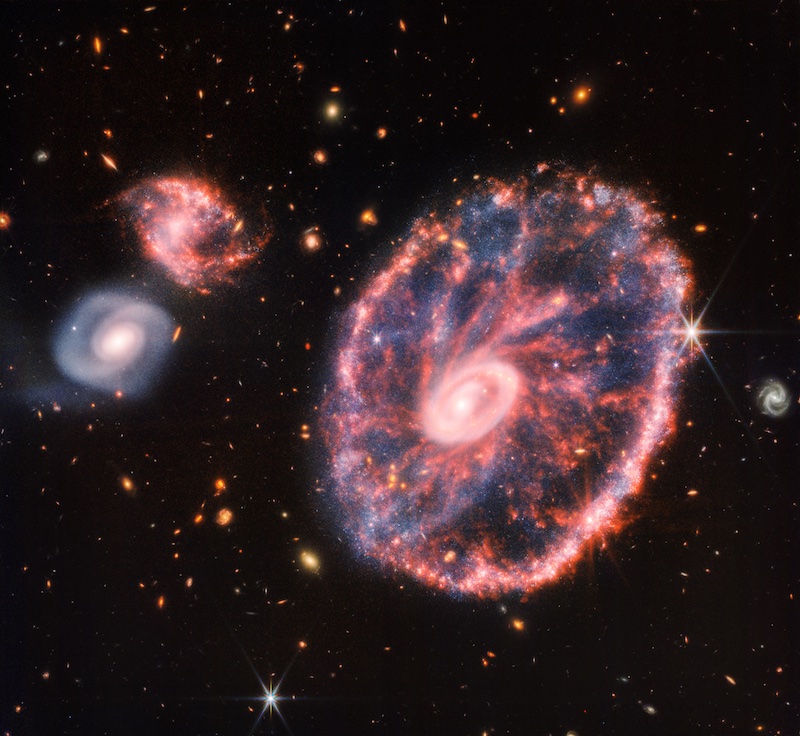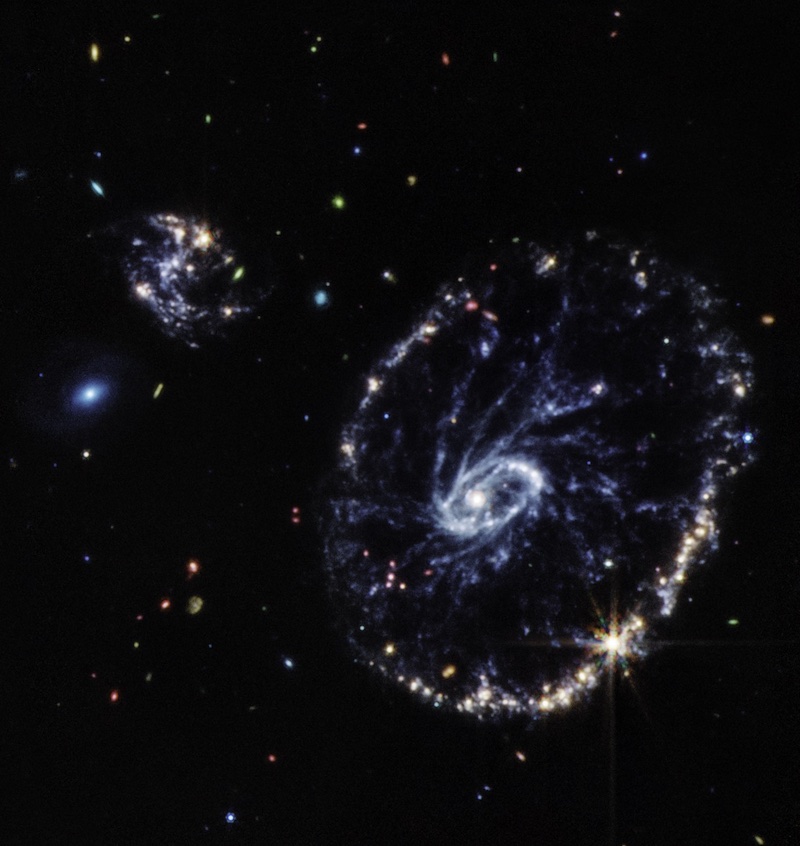
The Cartwheel Galaxy is lit up like a Ferris wheel ride at a carnival on a dark summer night in this new image from NASA’s James Webb Space Telescope released today (August 2, 2022). The galaxy has the classification of a ring galaxy, but you can also see the distinct spiral shape between the inner and outer rings. Many other galaxies appear in this image, including two smaller companion galaxies to the Cartwheel.
The Cartwheel Galaxy in infrared light
The Cartwheel Galaxy lies about 500 million light-years away in the constellation Sculptor. Its odd, dual-ringed appearance is thanks to a high-speed collision with a smaller galaxy not visible in this image. The result from this collision is the expanding rings.
Both rings are expanding outward from the scene of the collision. The inner ring surrounds the core, where gigantic young star clusters reside. The outer ring is plowing into gas, triggering star formation. Scientists think the outer ring has been expanding – and triggering star formation – for some 440 million years now.
However, the date of the collision is very uncertain. EarthSky asked Christine Pulliam of STScI for clarification on the date of the collision, since the original 1996 Hubble release on the Cartwheel Galaxy put the collision at 200 million years ago. Christine said:
That’s a great question. Our subject matter expert replied: ‘The age of the ring is actually very uncertain… [with] 6 possible values for the age: 210, 440, 630, 720 million years, or 1.32 or 2.15 billion years. So, 210 million years would be the absolute minimum possible value (at the time of that press release over 25 years ago), with 440 million years being the next most likely more recent value.’
Webb’s NIRCam view
Webb’s primary imager is the Near-Infrared Camera (NIRCam). Webb can see through the dust to spot the infrared light of young stars, such as those in the outer ring. In the image above, NIRCam data are colored blue, orange and yellow. The blue dots are individual stars or pockets of star formation. With NIRCam, we can see the difference between the smooth distribution of the older star populations in the core compared to the clumpy, younger star populations outside of it.
Webb’s MIRI view
To see finer details in the Cartwheel Galaxy, we turn to Webb’s Mid-Infrared Instrument (MIRI). MIRI data are colored red in the composite image below. This shows regions rich in hydrocarbons and other chemical compounds. It also shows silicate dust, which is similar to much of the dust on Earth. With MIRI, we can see the spiraling spokes that form the galaxy’s skeleton.
Webb’s observations show a galaxy undergoing a transformation from a spiral into the current ring configuration. And the galaxy is still evolving.

Turn the lights up ?
Check out the Cartwheel Galaxy as seen by @NASAHubble in visible light and Webb in infrared. Complimentary views from complementary telescopes! Download both images in full-resolution below ??
Hubble: https://t.co/XZD7QkYS5p
Webb: https://t.co/ZBPeDOUZfA pic.twitter.com/Mjd54oGuvN— NASA Webb Telescope (@NASAWebb) August 2, 2022
Bottom line: The James Webb Space Telescope’s newest release is the Cartwheel galaxy, a gorgeous spiraling galaxy with inner and outer rings.











